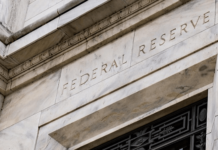The United States dollar is one of the most widely utilized currencies around the globe, both as an official currency and for international trade outside US borders. The USD, also known as the United States Dollar, is the official currency of the United States. It is divided into cents, with the most common denominations being 1 cent (penny), 5 cents (nickel), 10 cents (dime), 25 cents (quarter), and various dollar bills.
Gold standard, 20th century
As recently as mid-February, the majority of investors were expecting the Federal Reserve to cut interests once this year at most. “This administration and President Trump are committed to the policies that will lead to a strong dollar,” said Treasury Secretary Scott Bessent in an interview with CNBC Friday morning. Learn about the United States Dollar (USD) – its definition, uses, and importance in finance. Many, or all, of the products featured on this page are from our advertising partners who compensate us when points, ticks, and pips trading you take certain actions on our website or click to take an action on their website.
There is the penny (1¢ or $0.01), nickel (5¢ or $0.05), dime (10¢ or $0.10), quarter (25¢ or $0.25), and the much rarer half-dollar (50¢ or $0.50).1 All coins and paper bills have the faces of famous Americans on the front side. Dollar, originally, a silver coin that circulated xm pip calculator in many European countries; in modern times, the name of the standard monetary unit in the United States, Canada, Australia, New Zealand, and other countries. The Spanish peso, or piece of eight, which circulated in the Spanish and English colonies in America, was known as a dollar by the English-speaking peoples. Familiarity with this coin resulted in the official designation of the United States monetary unit as the dollar in 1792; the earliest known occurrence of a dollar sign ($) in print was in 1797. Canada adopted the dollar and monetary decimal system in 1858; Australia in 1966; and New Zealand in 1967.
- However, maintaining this partial gold standard became increasingly challenging in the 1960s.
- Freed from British monetary regulations, they each issued £sd paper money to pay for military expenses.
- The USD, also known as the United States Dollar, is the official currency of the United States.
- Our journey commenced with the development of AI-based Engines, such as the Pattern Search Engine, Real-Time Patterns, and the Trend Prediction Engine, which empower us to conduct a comprehensive analysis of market trends.
Federal Reserve Notes, 20th century to present
President Nixon ended the gold standard in 1973, which allowed the dollar to have a floating value rather than a fixed one. According to the 2022 Triennial bank survey conducted by the Bank for International Settlements, the U.S. dollar was on the side of 88% (out of 200% because of two-sided currency pairs) of all foreign-exchange trades. Congress continued to issue paper money after the Civil War, the latest of which is the Federal Reserve Note that was authorized by the Federal Reserve Act of 1913. Since the discontinuation of all other types of notes (Gold Certificates in 1933, Silver Certificates in 1963, and United States Notes in 1971), U.S. dollar notes have since been issued exclusively as Federal Reserve Notes. Article I, Section 9 of the Constitution provides that “a regular Statement and Account of the Receipts and Expenditures of all public Money shall be published from time to time”,11 which is further specified by Section 331 of Title 31 of the U.S.
Central Bank Rates
A reserve currency is a foreign currency that a central bank or treasury holds as part of its country’s formal foreign exchange reserves. Countries hold reserves for a number of reasons, including to weather economic shocks, pay for imports, service debts, and moderate the value of their own currencies. Silver and Gold Standard in the USFor years, the United States attempted to make a bimetallic standard, starting by adopting a silver standard based on the Spanish Milled Dollar in 1785. However, silver coins soon left circulation becoming completely suspended by 1806. By this time, most countries had already begun to standardize transactions by adopting the gold standard, meaning that any paper money could be redeemed by the government for its value in gold.
Discover Tickeron’s innovative Virtual Accounts, AI-driven trading tools designed to optimize your stock trading strategies. With advanced risk management and customizable options, these tools are crafted to enhance trading efficiency and effectiveness. With recession risks rising, investors believe rate cuts are back on the table.
The USD is the currency of the United States and is denoted by the symbol ‘$’. Dollar banknotes are currently issued in denominations of $1, $2, $5, $10, $20, $50, and $100. Each feature the portrait of a president on the front (with the exception of the $100 bill, which depicts Benjamin Franklin)—and the $20 bill may soon feature abolitionist Harriet Tubman on its front. The USD is the currency abbreviation for the U.S. dollar ($), the official currency of the United States of America and the world’s primary reserve currency over the past several decades. The United States dollar (USD) is one of the most recognized and widely used currencies globally. With a rich history dating back to its inception in 1792, the USD plays a pivotal role in the world economy.
What Is USD (United States Dollar)? Definition, Uses, Importance
- But critics say adopting cryptocurrency as legal tender constrains a government’s policy options during a crisis, and that the volatility of cryptocurrency reduces its viability as a means of exchange.
- Trump’s “Liberation Day” announcement represents the “end of the economic world as we knew it” and the consequences will not be limited to trade.
- Exporters are known as “petrodollars”, which becomes a primary source of revenue for these nations.
- Watermarks and security threads are the best way to verify the authenticity of a dollar bill.
Proponents—including El Salvadoran President Nayib Bukele, who has made Bitcoin legal tender—argue that such a system would free countries from the whims of other nations’ monetary policies. But critics say adopting cryptocurrency as legal tender constrains a government’s policy options during a crisis, and that the volatility of cryptocurrency reduces its viability as a means of exchange. However, some countries are experimenting with using blockchain technology to create digital versions of their existing traditional currencies. By buying and selling currencies on the open market, a central bank can influence the value of its country’s currency, which can provide stability and maintain investor confidence. For instance, if the value of the Brazilian real starts to fall during an economic downturn, the Central Bank of Brazil can step in and use its foreign reserves to bid up its value. Conversely, countries can intervene to stop their currencies from appreciating and make their exports cheaper.
Central banks often hold currency in the form of government bonds, such as U.S. treasuries. The U.S. treasury market remains by far the world’s largest and most liquid—the easiest to buy into and sell out of—bond market. The Spanish dollar was later displaced by the British pound sterling in the advent of the international gold standard in the last quarter of the 19th century. Monetary policy directly affects interest rates; it indirectly affects stock prices, wealth, and currency exchange rates. Through these channels, monetary policy influences spending, investment, production, employment, and inflation in the United States. Effective monetary policy complements fiscal policy to support economic growth.
Some economists have warned tariffs could initiate a bout of “stagflation,” the combination of slow growth and high inflation. In recent years the dollar index has fluctuated — dipping sharply during the pandemic, then rising to highs at the peak of inflation in summer 2022. Since then, the dollar’s value has been more volatile, reflecting changing economic conditions. In 2025, the value of the dollar has declined, largely due to market uncertainty tied to Trump’s protectionist policies and broad sweeping tariffs. Our currency rankings show that the most popular US Dollar exchange rate is the USD to EUR rate.
Such demand helps the United States to issue bonds at a lower cost, since higher demand for a government’s bonds means it doesn’t have to pay as much interest to entice buyers, and helps to keep the cost of the United States’ now substantial external debt down. Since the end of World War II, the dollar has been the world’s most important means of exchange. It is the most commonly held reserve currency and the most widely used currency for international trade and other transactions around the world. The centrality of the dollar to the global economy confers some benefits to the United States, including borrowing money abroad more easily and extending the reach of U.S. financial sanctions. Continental currency depreciated badly during the war, giving rise to the famous phrase “not worth a continental”.42 A primary problem was that monetary policy was not coordinated between Congress and the states, which continued to issue bills of credit. This resulted in the clause “No state shall… make anything but gold and silver coin a tender in payment of debts” being written into the United States Constitution article 1, section 10.
Currency traders and international travelers must understand the difference between dollars, euros, pesos, Brazilian real and Florin. In 1933 all precious metal coins were officially collected and replaced by ordinary metals. By 1971, the gold standard was finally abandoned and the dollar became a fiat currency, with a value based on market confidence. The US central bank is called the Federal Reserve Bank (commonly referred to as “The Fed”). The USD is the most traded currency in the forex market and can be paired with all other major currencies. Common names for the USD include the greenback, buck, green, dough, smacker, bones, dead presidents, scrillas, and paper.
This blog post by CFR’s Brad W. Setser explains how China and other countries hide their foreign exchange reserves. Some experts say this benefit is modest, pointing to the fact that other developed countries are able to borrow at similarly low rates. Former Federal Reserve Chair Ben Bernanke has argued that the United States’ declining share of the global economy and the rise of other currencies such as the euro and yen have eroded the U.S. advantage. “The exorbitant privilege is not so exorbitant any more,” Bernanke wrote in 2016. The paper “dollar bill” is legally called a “Federal Reserve Note”.
Freed from British monetary regulations, they each issued £sd paper money to pay for military expenses. The Continental Congress also began velocity trade issuing “Continental Currency” denominated in Spanish dollars. For its value relative to states’ currencies, see Early American currency. Notably, $500 and $1,000 banknotes used to circulate in limited amounts but ceased in 1969. Coins are minted in denominations of $0.01 (cent), $0.05 (nickel), $0.10 (dime), $0.25 (quarter), $0.50 (half dollar), and $1.00. Banknotes and coins are produced by the Treasury Department and shipped directly to Federal Reserve banks and branches for distribution and circulation.
Most people around the world will accept a $20 bill for payment in lieu of their own country’s currency; most oil contracts are in dollars, and 86% of all foreign exchange trade is conducted in dollars. Within the United States, the amount of dollars in existence is measured by one of the several money-supply (money stock) metrics put out by the Fed. The monetary base, or M0, is the aggregate total amount of dollars in circulation in the form of cash (banknote and coin).







